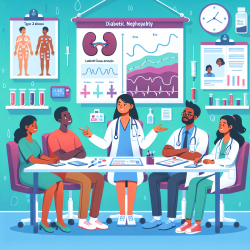The recent research article titled "The characteristics and activities of child and adolescent mental health services in Italy: a regional survey" offers critical insights into the functioning and organization of Child and Adolescent Mental Health Services (CAMHS) in Italy. This comprehensive study, conducted in the Emilia-Romagna region, underscores the importance of structured and well-equipped mental health services for children and adolescents. Here, we will explore key findings from the study and how practitioners can leverage these insights to enhance their services.
Key Findings
The study surveyed 11 CAMHS, encompassing 110 outpatient units, with a ratio of approximately 20 child psychiatrists and 23 psychologists per 100,000 inhabitants aged 0-17 years. Key findings include:
- Approximately 6% of the target population was in contact with outpatient CAMHS.
- Most patients received a diagnosis of language disorder or learning disability (41%).
- First-ever contacts accounted for 30% of annual visits across all units.
- Hospital bed availability was 5 per 100,000 inhabitants aged 0-17 years.
Implementing the Research Findings
Practitioners can enhance their service delivery by implementing the following strategies based on the study's outcomes:
1. Standardized Assessment Procedures
The study highlighted the uneven utilization of standardized assessment procedures. Implementing standardized diagnostic and outcome-evaluation tools can ensure consistency and accuracy in diagnosing and treating mental health disorders.
2. Improved Emergency Services
The limited availability of dedicated emergency services during non-office hours is a critical area requiring improvement. Establishing 24/7 emergency referral protocols and ensuring the availability of child psychiatrists during night hours and holidays can significantly enhance service accessibility and effectiveness.
3. Focus on Preventive and Early Intervention
Early assessment and intervention targeting young people should be a priority. Developing early intervention services and preventive programs can help in managing age-specific risk factors and related distress, ultimately improving long-term outcomes.
4. Enhanced Collaboration with Schools and Other Health Services
The study found that collaboration with schools and other health services was not uniformly practiced. Strengthening partnerships with educational institutions and healthcare providers can facilitate a holistic approach to mental health care, ensuring comprehensive support for children and adolescents.
Encouraging Further Research
While the study provides valuable insights, it also highlights areas that require further research. Practitioners are encouraged to engage in continuous research to address gaps in knowledge and improve service delivery. Key areas for future research include:
- Longitudinal studies to assess the long-term impact of early intervention programs.
- Research on the cost-effectiveness of different treatment modalities.
- Studies on the integration of mental health services with educational and social services.
To read the original research paper, please follow this link: The characteristics and activities of child and adolescent mental health services in Italy: a regional survey.










